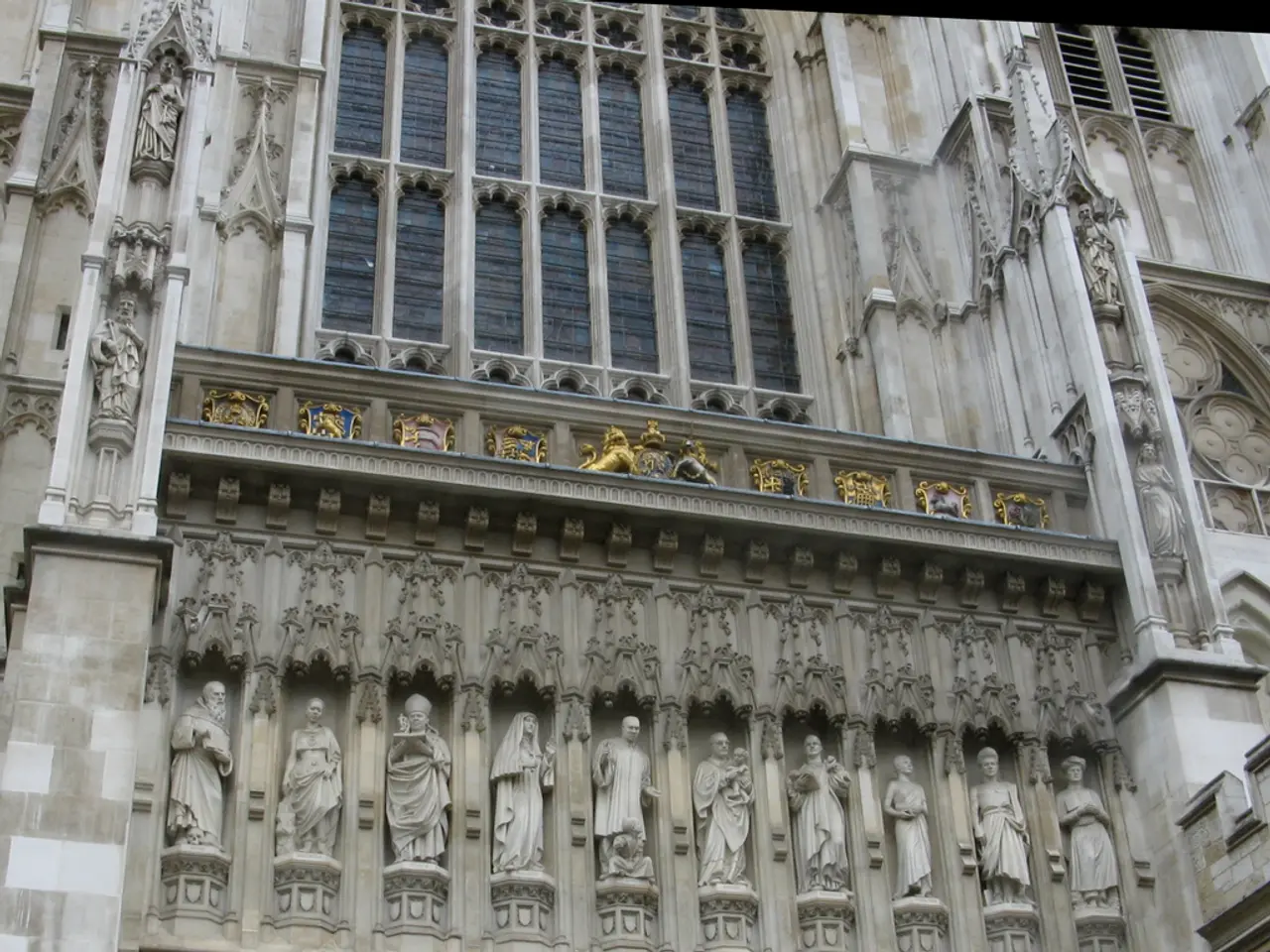Essential Plastering Methods and Varieties of Plaster for Finalizing Your Home Renovation Project
In the world of home renovations, choosing the right plaster for your walls can make a significant difference in both the aesthetic appeal and the functionality of your space. Here's a breakdown of some common plaster types and their ideal applications.
Cement Plaster is a versatile and popular choice, suitable for both interior and exterior walls. It provides a durable, strong surface that can be applied in layers 12–20 mm thick. Ideal for modern masonry walls where toughness and water resistance are needed, cement plaster requires proper curing to prevent cracking [2].
Lime Plaster, on the other hand, is a traditional, breathable, and eco-friendly option, typically used in older homes. Its flexibility and moisture regulation properties make it excellent for historic building restorations. Lime plaster reduces cracking and improves indoor air quality. It's best for older solid walls, sustainable builds, or where breathability is key, such as restoration projects or rustic finishes [1][2][3].
Gypsum Plaster is a budget-friendly and quick-setting option, ideal for interior use as a thin finishing coat over plasterboard or existing plaster. Gypsum plaster sets quickly and is easy to apply, but it's not suited for damp areas or exterior walls. Best for smooth interior walls and ceilings where speed and finish quality matter [3].
Venetian Plaster offers a luxurious finish with a polished marble-like appearance. It's durable, mold-resistant, and ideal for upscale interiors in dry environments. However, it requires skilled application and is costly. Venetian plaster is best for feature walls or refined spaces [1][3].
Tadelakt is a traditional Moroccan plaster that is water-resistant and mold-resistant, suitable for wet rooms, kitchens, and bathrooms. It provides a natural, rustic finish and is eco-friendly. Tadelakt is perfect where moisture resistance with aesthetic appeal is needed [3].
When it comes to exterior walls, Stucco or Render is often the go-to choice. Stucco can be cement or acrylic-based, with mineral (cement) plaster being strong, inexpensive, and reliable, but brittle. Acrylic plaster is elastic and color-customizable, suitable for facades that need some flexibility to avoid cracking. Types must be chosen with wall construction details in mind to avoid moisture issues [3][5].
Marmorino Plaster is a lime-based plaster with ground marble, creating effects from matte to glossy or stone-like. It's used for decorative interior walls, offering a high-end finish with durability [3].
In summary, choosing the best plaster depends on wall substrate, exposure to moisture, and desired aesthetics, balancing durability, breathability, and cost [1][2][3][5]. For instance, cement plaster is not as breathable or flexible as lime and is unsuitable for period homes. Clay plaster, while popular, is not suitable for areas regularly exposed to water. Clay plaster costs more than standard gypsum finishes, but additional decorating costs are avoided since it's designed to be left unpainted.
Different types of plaster and plastering techniques can alter the look of a space and have practical applications. For example, gypsum plaster is a common type of plaster used in homes, often used in conjunction with plasterboard. Browning plaster, bonding plaster, Thistle plaster, Carlite plaster, hardwall plaster, and one-coat plasters are different types of gypsum plaster.
In listed buildings and conservation projects, lime plaster is often used due to its traditional nature and the requirement for using traditional materials. Venetian plaster isn't cheap and often requires a specialist to apply it. Tadelakt gives a beautiful, natural, rustic finish suitable for traditional and contemporary interior schemes, and it's perfect for wet rooms and kitchens. Clay plaster's warm, natural tones are often left unpainted for feature walls, but colors can be added to the mix. Marmorino plaster offers a variety of effects from matt to glossy and imitates natural stone or polished marble.
In conclusion, understanding the properties and ideal applications of various plaster types can help you make an informed decision for your home renovation project, ensuring a beautiful and functional result.
- For modern home-improvement projects, choosing the right plaster for walls is crucial in achieving a desired aesthetic appeal and functionality.
- Cement plaster is a versatile and popular choice, suitable for both interior and exterior walls, offering a durable, strong surface.
- Lime plaster, being traditional, breathable, and eco-friendly, is ideally used in home-and-garden restorations, such as older homes or sustainable builds.
- Gypsum plaster is budget-friendly, quick-setting, and ideal for thin finishing coats over home-improvement products like plasterboard, but not suitable for damp areas or exterior walls.
- Tadelakt, a traditional Moroccan plaster, offers water-resistance and mold-resistance, making it perfect for kitchens, bathrooms, and wet rooms.
- Stucco or render is often the go-to choice for exterior walls, available in both cement and acrylic-based types, with the latter being more flexible and color-customizable.
- Marmorino plaster provides a luxurious finish, imitating natural stone or polished marble, and is ideal for decorative interior walls.
- When planning a home renovation project, it's essential to consider the wall substrate, exposure to moisture, desired aesthetics, and cost to choose the best plaster that balances durability, breathability, and cost factors.




